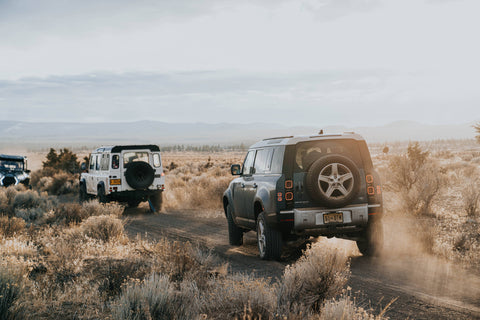
Author: Thayer Low
Some of us remember the days when we didn’t have a digital map in our pockets that could get us just about anywhere in the world.
The navigational technology we have these days is amazing. But the moments when your smart phone runs out of batteries — or you’re out of range — can be detrimental. That's especially true when you’re out in the bush.
Being able to understand a paper map and navigate your way safely in and out of nature is a key skill if you plan to venture out of your comfort zone and get off-grid.
The first step is to understand where you are and what you’re looking at. There are 5 important parts to a map:
- The Title
- The Key
- The Scale
- The Grid
- The North Arrow
Knowing how to locate and read these parts are essential to reading a paper map the right way. With a minimal amount of practice, you’ll have a great understanding that can be fun to learn — and a life saver in some situations.
Here’s how to read a paper map so you can safely navigate yourself in and out of the wilderness on your next camping or overlanding trip. Heck, you might even enjoy it so much, you keep that smart phone turned off on purpose.
Step 1: Find the Title
The Title lets you know what you’re looking at. It’s important to make sure you have a map of the surrounding area where you’re at, or at least of where you plan to be!
Sometimes maps are split into multiple sections, meaning you may need a few to cover the full area of where you want to go.
Step 2: Find the North Arrow
The North Arrow, or sometimes a Compass Rose is usually at the top of the map. This will tell you which way to orient the map.
The top of the map will almost always be north. From there, you can orient yourself and where you’re headed.
Step 3: Find the Key or Legend
The Key or Legend defines all the symbols on the map. This is so there isn’t an excessive amount of writing all over the map, making it easier to see what’s important.
The legend will show you how roads, trails, water ways, and telephone poles are portrayed on the map. Many maps use similar keys, such as the United States Geological Survey, or USGS.
It’s important to check these and make sure you’re following the correct lines to get where you need to be — whether it be a trail, river, or road.
Step 4: Find the Scale
Usually, across the bottom of the map will be the Scale. This gives you an idea of the unit of measurement the map relates to real life.
The scale can be important when trying to figure out how far you have to go until your destination, or how large the overall area is that you’re looking at on the map.
When purchasing maps, take note if they have different scales, it might make it difficult to go between two if they vary a large amount.
Step 5: Find the Grid
A map’s Grid is a series of imaginary horizontal and vertical lines drawn onto the map. They may represent actual latitudes and longitudes, or they may just split the map into smaller parts to decipher more easily.
Practice Makes Perfect
Once you have a sense of what you’re looking at, first try a small challenge, like looking up a local river and navigating to it from a trailhead or your home.
Once you arrive at your destination, the river can be a great place for a picnic or a romp with the kids or dogs.
Taking this a step farther, try going from your picnic at the river and choose another location. How far is it going to be to drive or walk? (Hint: take a peek at the scale.)
What is you heading or direction of travel? (Hint: now orient yourself with the north arrow.)
Combining your navigational technology with paper maps can be a great way to go, too. Maps on our phones can show us gas stations, restaurants, and just about everything.
But paper maps will show small trails, elevation changes, and a larger overall area. Plus, they’ll never need a battery or service.
Planning in advance to use both technology and good old fashioned paper map can lead to some of the most exciting camping or overlanding adventures. And keeping a few maps in the car can be a great way to entertain the kiddos, too.
Spend More Time Outside This Year
After a long year of quarantining, you’ve probably noticed that you and your family feel better when you’re spending time outdoors.
It’s not just in your head, either. As it turns out, there are endless health benefits from spending time with Mother Nature.
Discover the health benefits of spending more time outside this winter >
About the Author
Thayer Low is an aspiring rally driver, mom of preschool-age Irish twins, and a freelance writer. Her passion for leaky Land Rovers have spurred her on in travel and mechanical abilities, things that she hopes to share with her children and other women.




Comments (0)
There are no comments for this article. Be the first one to leave a message!